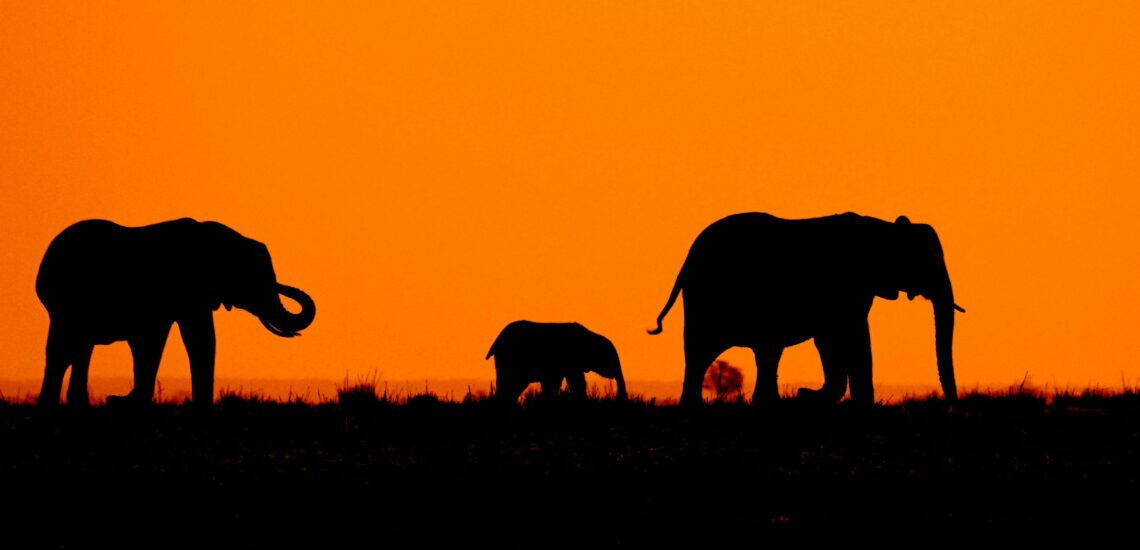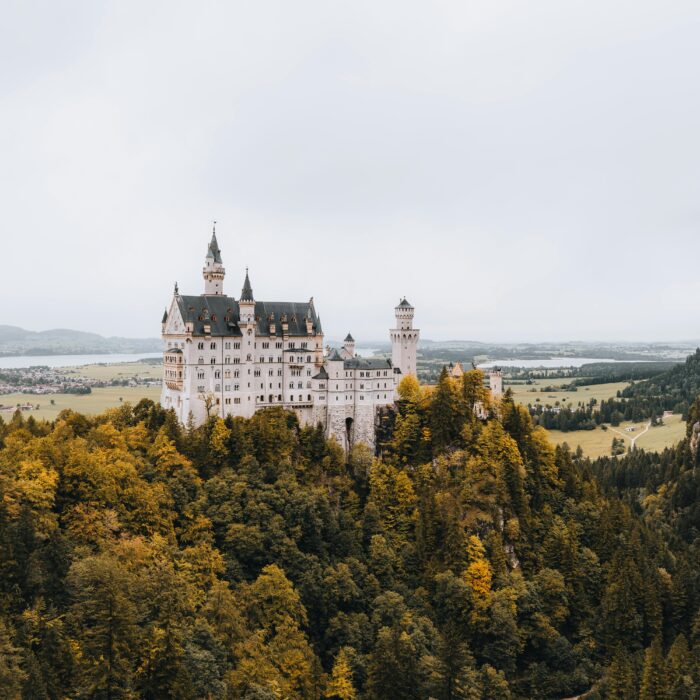Краткие факты о Ботсване:
- Население: Приблизительно 2,6 млн человек.
- Столица: Габороне.
- Официальный язык: Английский.
- Национальный язык: Сетсвана.
- Валюта: Ботсванская пула (BWP).
- Правительство: Унитарная парламентская республика.
- Основная религия: Христианство (преимущественно протестантское), также исповедуются верования коренных народов.
- География: Не имеющая выхода к морю страна на юге Африки, граничащая с Намибией на западе и севере, Зимбабве на северо-востоке, Замбией на севере и Южной Африкой на юге и юго-востоке. Ботсвана – преимущественно равнинная страна, большую часть территории которой занимает пустыня Калахари.
Факт 1: В Ботсване обитает самая большая популяция слонов в мире
В Ботсване обитает самая большая популяция слонов в мире – по разным оценкам, от 130 000 до 150 000 слонов. Эти слоны в основном обитают в северных регионах страны, в частности, в дельте реки Окаванго и Национальном парке Чобе. Огромные территории дикой природы Ботсваны в сочетании с эффективными природоохранными мероприятиями и мерами по борьбе с браконьерством сделали эту страну убежищем для африканских слонов.
Эта большая популяция, хотя и является значительным успехом в сохранении природы, также порождает проблемы. Конфликт между человеком и слоном – постоянная проблема, поскольку слоны иногда вторгаются на фермерские земли и в населенные пункты в поисках пищи и воды. Несмотря на эти проблемы, Ботсвана, уделяющая большое внимание охране дикой природы, стала лидером по сохранению слонов во всем мире.

Факт 2: Более трети территории страны является охраняемой территорией
Более трети территории Ботсваны является охраняемой территорией: национальные парки, заповедники и заказники занимают около 38% территории страны. Такая разветвленная сеть заповедников является ключевым фактором успешной работы по охране дикой природы и одной из причин, почему Ботсвана славится своим процветающим биоразнообразием и развитым сектором экотуризма.
Приверженность правительства сохранению природы помогла защитить большие популяции диких животных, включая крупнейшую в мире популяцию слонов. Крупнейшие заповедники, такие как Национальный парк Чобе, дельта реки Окаванго и Центральный заповедник Калахари, являются одними из самых известных, предоставляя убежище для исчезающих видов и поддерживая репутацию Ботсваны как одного из ведущих африканских направлений для любителей природы и сафари-туристов.
Факт 3: Дельта Окаванго стала 1000-м объектом, включенным в Список всемирного наследия ЮНЕСКО
Дельта Окаванго в Ботсване стала 1000-м объектом, включенным в Список всемирного наследия ЮНЕСКО в 2014 году. Это одна из крупнейших внутренних дельт в мире, занимающая в пик сезона наводнений площадь около 15 000 квадратных километров (5 800 квадратных миль). В отличие от большинства дельт, впадающих в море, река Окаванго впадает в пустыню Калахари, создавая оазис, в котором обитает огромное количество диких животных.
Дельта реки является главной достопримечательностью для туристов благодаря своим потрясающим пейзажам и богатому биоразнообразию. Сюда приезжают со всего мира, чтобы увидеть необычайную концентрацию диких животных, включая слонов, львов, леопардов и бесчисленные виды птиц. Уникальная экосистема в сочетании с сезонными наводнениями, которые превращают регион в пышные болота, делает его одним из главных мест для сафари в Африке и природным чудом, которое стоит увидеть.
Примечание: Если вы планируете поездку в Ботсвану, проверьте, нужно ли вам международное водительское удостоверение в Ботсване для аренды и управления автомобилем.
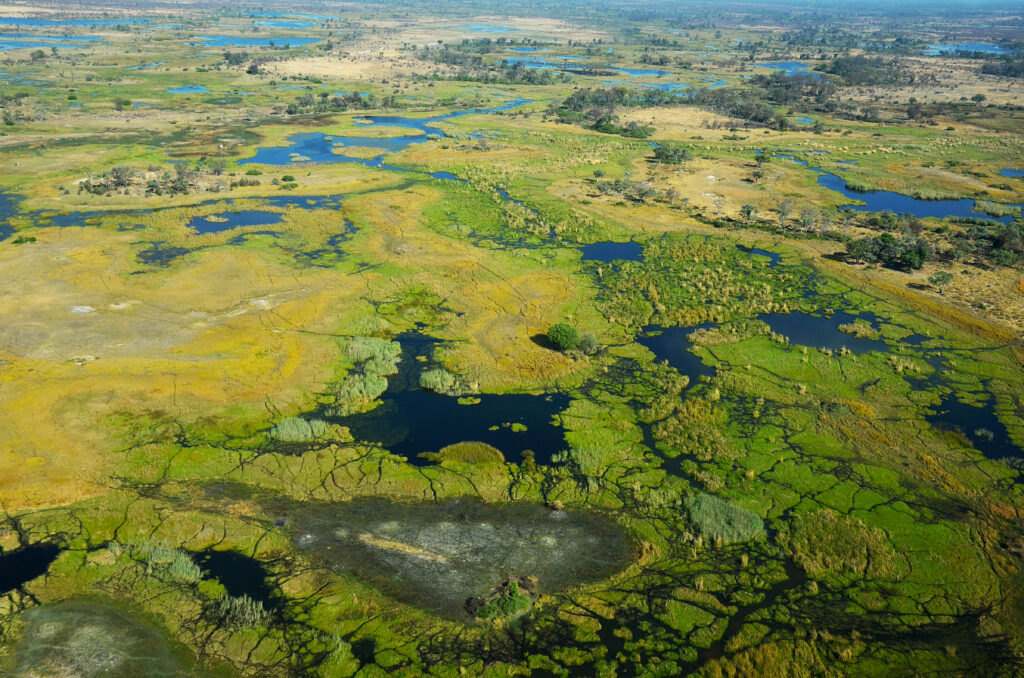
Факт 4: Ботсвана и Замбия имеют самую короткую границу между странами
Ботсвана и Замбия имеют самую короткую границу между двумя странами в мире: ее длина составляет всего 150 метров (492 фута). Эта короткая граница проходит в месте слияния рек Замбези и Чобе, недалеко от города Казунгула. Исторически граница была предметом споров, но впоследствии она была подтверждена соглашениями между двумя странами.
Чтобы облегчить транспортное сообщение и торговлю между двумя странами, в 2021 году было завершено строительство моста Казунгула, соединившего Ботсвану и Замбию через реку Замбези. Этот мост стал важным объектом инфраструктуры, улучшив региональное сообщение и став альтернативой парому, который ранее работал на этой переправе.
Факт 5: В Ботсване находятся одни из самых больших соляных озер в мире
В Ботсване находятся одни из самых больших соляных плато в мире, в первую очередь соляные плато Макгадикгади. Эти обширные соляные равнины, остатки древнего озера, которое когда-то покрывало большую часть региона, являются одними из крупнейших на планете и занимают площадь около 16 000 квадратных километров (6 200 квадратных миль). Соляные сковороды Макгадикгади расположены на северо-востоке Ботсваны и являются частью большого бассейна Калахари.
В сухой сезон паны напоминают суровую белую пустыню, создавая сюрреалистический и потусторонний пейзаж. Однако во влажный сезон здесь могут образовываться неглубокие временные озера, которые привлекают большие популяции фламинго и других перелетных птиц, а также стада диких зверей и зебр.
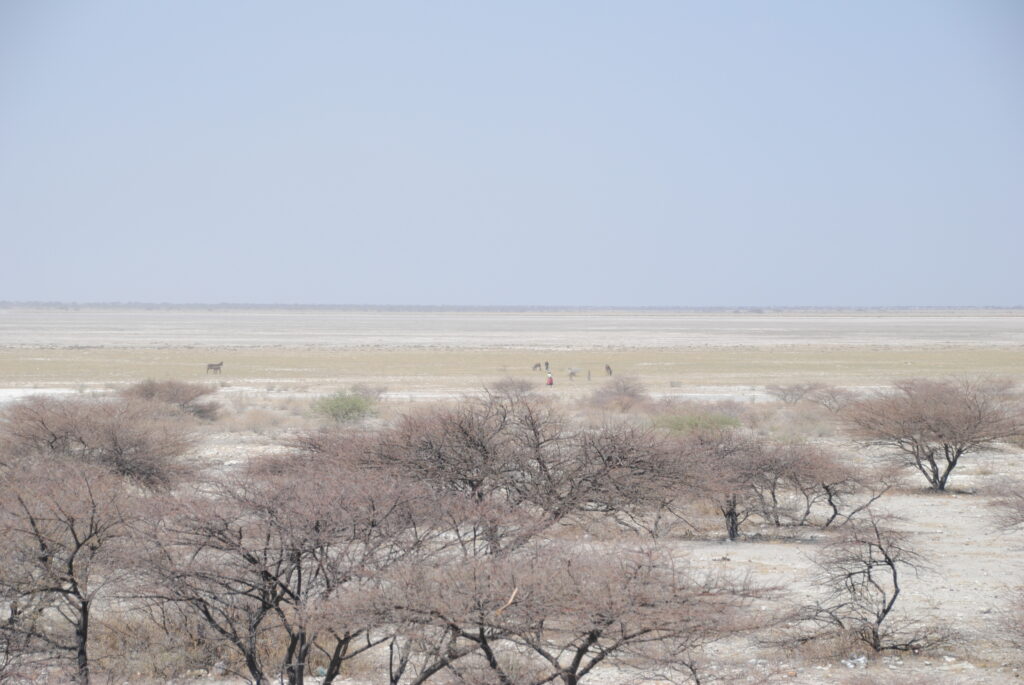
Факт 6: В Ботсване живет самое древнее племя в мире
В Ботсване проживает народ сан, также известный как бушмены, который считается одним из древнейших племен в мире. Считается, что сан – прямые потомки самых ранних людей, а их предки жили на юге Африки десятки тысяч лет. Народ сан, возможно, является одним из древнейших непрерывных человеческих родов, возраст которого колеблется от 17 000 до 100 000 лет.
Сан традиционно жили как охотники-собиратели, полагаясь на свои глубокие знания земли, чтобы выжить в суровых условиях пустыни Калахари. Их культура, язык и образ жизни глубоко связаны с миром природы, с богатой устной традицией и глубоким пониманием поведения животных и методов выживания.
Сегодня, несмотря на то, что многие представители народности сан были перемещены и их традиционный образ жизни изменился, предпринимаются усилия по сохранению их культурного наследия и защите их прав на исконные земли. Их история и культурная преемственность делают их важной частью человеческого наследия Ботсваны.
Факт 7: Ботсвана – крупнейший экспортер алмазов
Ботсвана является крупнейшим в мире экспортером алмазов по стоимости, и эта позиция сохраняется за ней на протяжении десятилетий благодаря богатым алмазным месторождениям страны. Добыча алмазов играет важнейшую роль в экономике Ботсваны, обеспечивая около 80% экспортных поступлений и около трети ВВП страны. Открытие алмазов в 1967 году, вскоре после обретения независимости, превратило Ботсвану из одной из беднейших стран мира в государство со средним уровнем дохода.
Крупнейший алмазный рудник страны, Джваненг, является одним из самых богатых в мире и производит высококачественные драгоценные камни. Ботсвана также сформировала давнее партнерство с De Beers, через совместное предприятие Debswana, которое отвечает за большинство операций по добыче алмазов. Помимо добычи, Ботсвана инвестирует в огранку алмазов, полировку и другие отрасли с добавленной стоимостью, чтобы извлечь дополнительную выгоду из своих природных ресурсов.
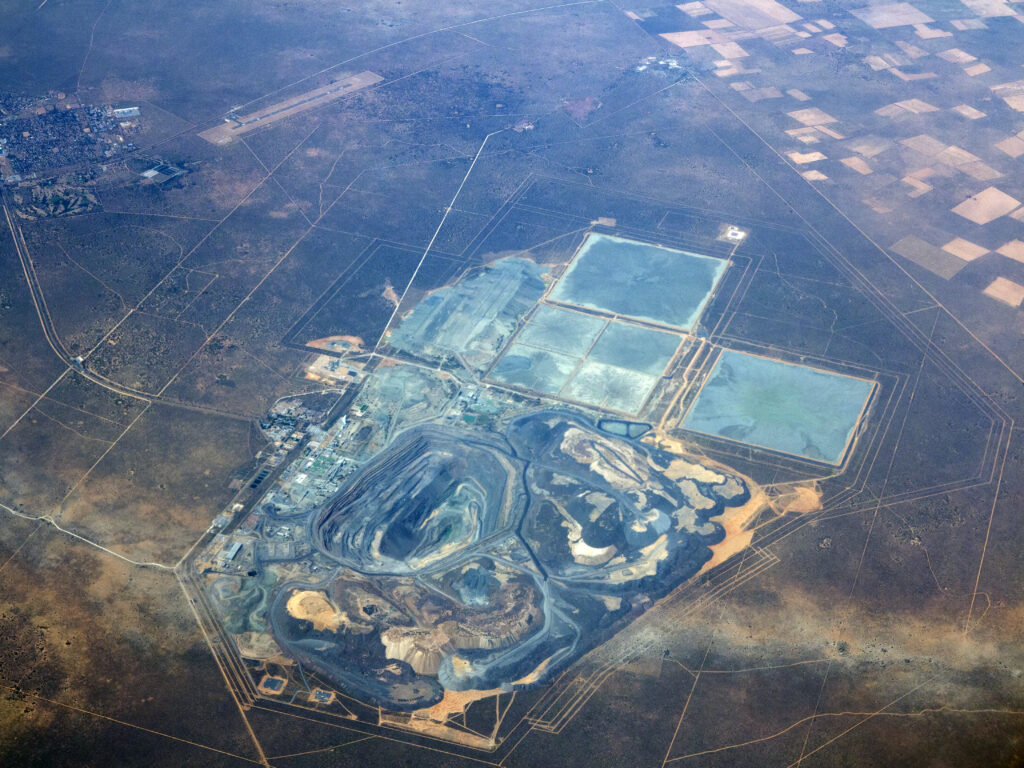
Факт 8: В Ботсване одна из самых низких плотностей населения в мире
Ботсвана – одна из стран с самой низкой плотностью населения в мире: примерно четыре человека на квадратный километр (10 человек на квадратную милю). Такая низкая плотность во многом объясняется огромной площадью страны – около 581 730 квадратных километров (224 607 квадратных миль) и населением чуть более 2,4 миллиона человек.
Большую часть территории Ботсваны занимает пустыня Калахари, поэтому значительная часть страны мало заселена. Большая часть населения сосредоточена в восточной части страны, где земля более плодородна и расположены такие города, как столица Габороне.
Факт 9: Флаг Ботсваны отличается по цвету от большинства африканских флагов
Флаг Ботсваны отличается от большинства африканских флагов своей уникальной цветовой гаммой. В то время как многие африканские флаги включают в себя красный, зеленый, желтый и черный цвета, символизирующие панафриканизм или колониальное влияние, флаг Ботсваны использует характерное сочетание светло-голубого, черного и белого. Флаг был принят в 1966 году, когда страна получила независимость от Великобритании.
Светло-голубой цвет символизирует воду, в частности дождь, который является ценным ресурсом в засушливой местности Ботсваны, где доминирует пустыня Калахари. Черно-белые полосы символизируют расовую гармонию и сосуществование различных этнических групп в стране. Такой выбор цветов и символики отражает ценности Ботсваны – единство, мир и экологические проблемы, – что отличает его от более распространенных тем, встречающихся на других африканских флагах.

Факт 10: В горах Тсодило насчитывается около 4 500 наскальных рисунков
Горы Тсодило в Ботсване известны своей богатой коллекцией наскальных рисунков. По оценкам, здесь насчитывается около 4 500 отдельных произведений искусства, разбросанных по разным местам в этом районе. Считается, что этим рисункам тысячи лет, а возраст некоторых из них превышает 20 000 лет, что делает их значимыми не только с культурной, но и с исторической точки зрения.
Наскальные рисунки представляют собой художественное самовыражение народа сан, отражающее их верования, ритуалы и повседневную жизнь. На рисунках часто изображены животные, человеческие фигуры и абстрактные символы, дающие представление о культуре и духовной жизни первых жителей региона. Горы Цодило, признанные ЮНЕСКО объектом Всемирного наследия, считаются священным местом для народа сан и являются важным объектом как для археологических исследований, так и для туризма.

Опубликовано Сентябрь 22, 2024 • 8м на чтение

